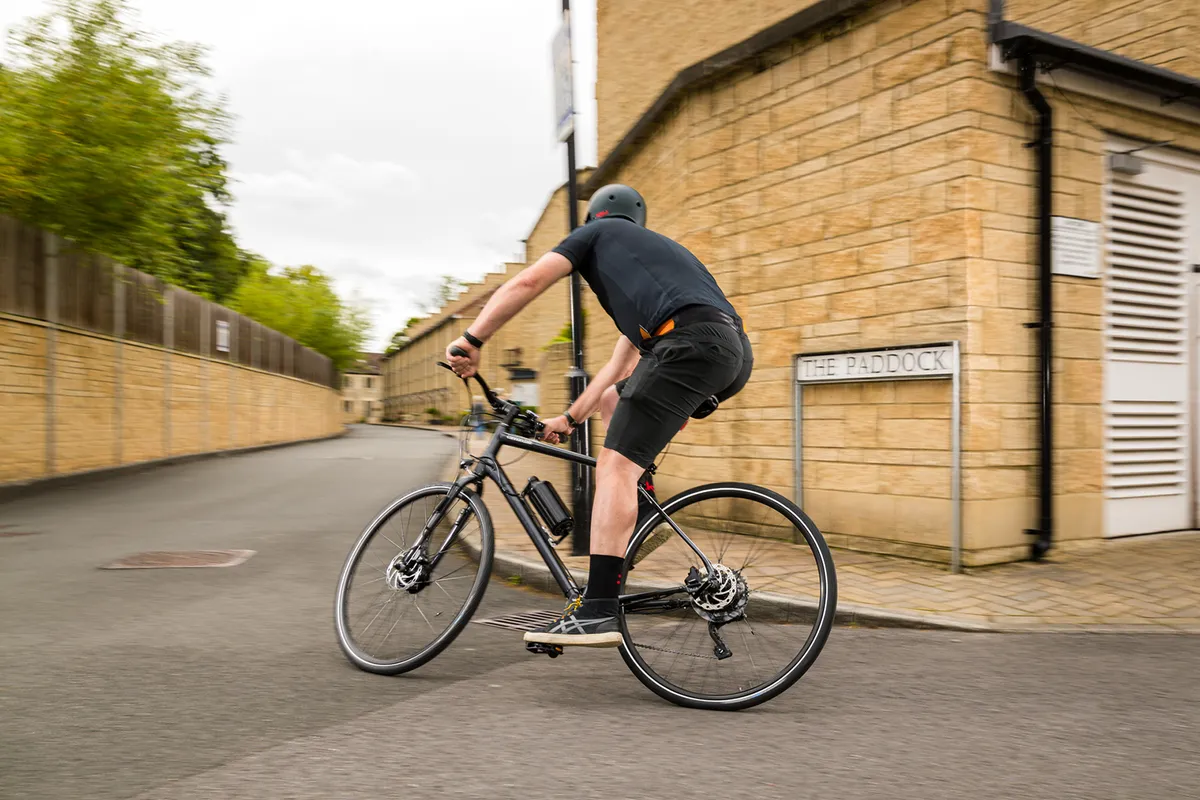In our Tech Q&A series, we tackle cycling queries – no matter how trivial – with insights from the BikeRadar team and trusted industry experts. This time, a reader wants to know which four-piston brakes and rotors are compatible with his Giant Talon hardtail now he has added a 1,000W rear-wheel ebike conversion kit.
I have a Giant Talon hardtail that I’ve put a 1,000W rear-wheel ebike conversion kit on. I’d like to fit four-piston brakes with a 200/203mm, or even 230mm, front rotor and the biggest rear disc possible. Can you outline what’s compatible with my bike?
Daniel Hayton, via email
The first thing to say is that bike frames aren’t necessarily designed to take the forces that are put through them by a powerful rear-wheel hub motor.
Even for a mid-motor electric mountain bike, 1,000W is a punchy output, and those frames are purpose-built to be strong and withstand the additional forces.
As a result, adding a motor is liable to void any manufacturer’s warranty. Moreover, not all conversion kits are road- or trail-legal.

To avoid being classed as a motorbike, UK ebikes must be limited to a top speed of 15.5mph and a maximum continuous power of 250W (although a peak output of 1,000W or more is currently allowed).
That said, now that you’ve fitted the kit (thus bumping up the weight and potential speed of the bike), we can understand why you want as much stopping power as possible.
Bigger rotors plus more pistons equals more powerful brakes. So, looking to upgrade your discs is a smart move, but it’s no replacement for sensible, careful riding – 1,000W is a lot!
Note that most frames and forks will have a limit on the size of disc they’re designed to be used with, and exceeding this could also void the manufacturer’s warranty.
It’s unlikely you’ll be able to increase the diameter of either rotor by more than 20mm.
Usually, the type of riding a bike is designed for informs the rotor size.

For example, an enduro or downhill bike will have 200/203mm discs front and rear, while a cross-country hardtail with an 80 to 100mm fork – like your Giant Talon – will be designed to take a 160 to 180mm rotor. In fact, even the latter may be a push at the rear.
Before you consider adding a larger rotor, there are a few specifics you need to know.
First, what size are your current rotors? Second, what’s the mounting style for your frame and fork?
Modern mountain bikes generally use the ‘post mount’ (PM) standard, where the brake caliper bolts directly into a pair of posts that are built into the frame or fork.
Older models may have international standard (IS) mounts, where the caliper attaches to the side of a plate integrated into the frame/fork. In either case, you can potentially use a compatible mount adaptor to increase the rotor capacity by 20mm.
If you decide to add a mount adaptor and larger rotor, you need to check there’s sufficient clearance around the disc and that it runs through the calliper correctly.
With a short-travel fork such as yours, we wouldn’t advise fitting a rotor larger than 180mm. That’s what the current Talon comes fitted with, but if yours is an older model, it may have a smaller front disc.
Even without increasing rotor size, fitting four-piston brakes will give you an increase in power.

You could also try a thicker rotor – these are inherently stronger, give better control and modulation, and dissipate heat better.
For example, SRAM’s HS2 rotors are 2.3mm across and work noticeably better than the older, 1.85mm-wide CenterLine discs.
Finally, consider the compound of your brake pads – depending on the conditions you typically ride in, swapping to organic (sharper-feeling in the dry), sintered/metallic (better under prolonged braking and in wet conditions) or semi-metallic (a mix of both, but more expensive) pads could help.
Do you have a cycling question you want answered? Every month, we’ll select the most interesting questions and bring you an expert-level response from our unparalleled access to the greatest minds in cycling, both on the BikeRadar staff and across the industry. Send your questions through to podcast@bikeradar.com





